|
|
ADDRESS AT THE SECOND CONVOCATION OF DEV SANSKRITI VISHWAVIDYALAYA, HARIDWAR
09-12-2006 : Haridwar
Capacity Building for Enlightened Citizenship
?The deeper the water the lotus stem in and float
firmer the mental strength the higher people rise?
- Kural:595
I am delighted to participate in the 2nd Convocation of Dev Sanskriti Vishwavidyalaya. I am very happy that this institution has been created with a motto of developing the divine culture which is of utmost importance to us while we are on the path of transforming India into prosperous, happy and peaceful society. I congratulate all the students of Dev Sanskriti Vishwavidyalaya on their accomplishment of acquiring knowledge and resulting into degrees and certificates. My greetings to the great teachers who have worked very hard in shaping the young minds. I also greet all the parents who have inspired their children towards studies and provided them the resources and environment for their growth.
I understand that this university has come out of the divine dream of Pandit Sriram Sharma Acharya, who was a freedom fighter and author of over 3000 books. He is being aptly called as the initiator of knowledge revolution in India. Friends, when I was a young boy at Rameswaram, I had witnessed the patriotism of lawyers, scientists, spiritualists, businessmen and educationists who sacrificed everything for making India into an independent nation. We owe our freedom to these great souls. I salute such patriotic heroes.
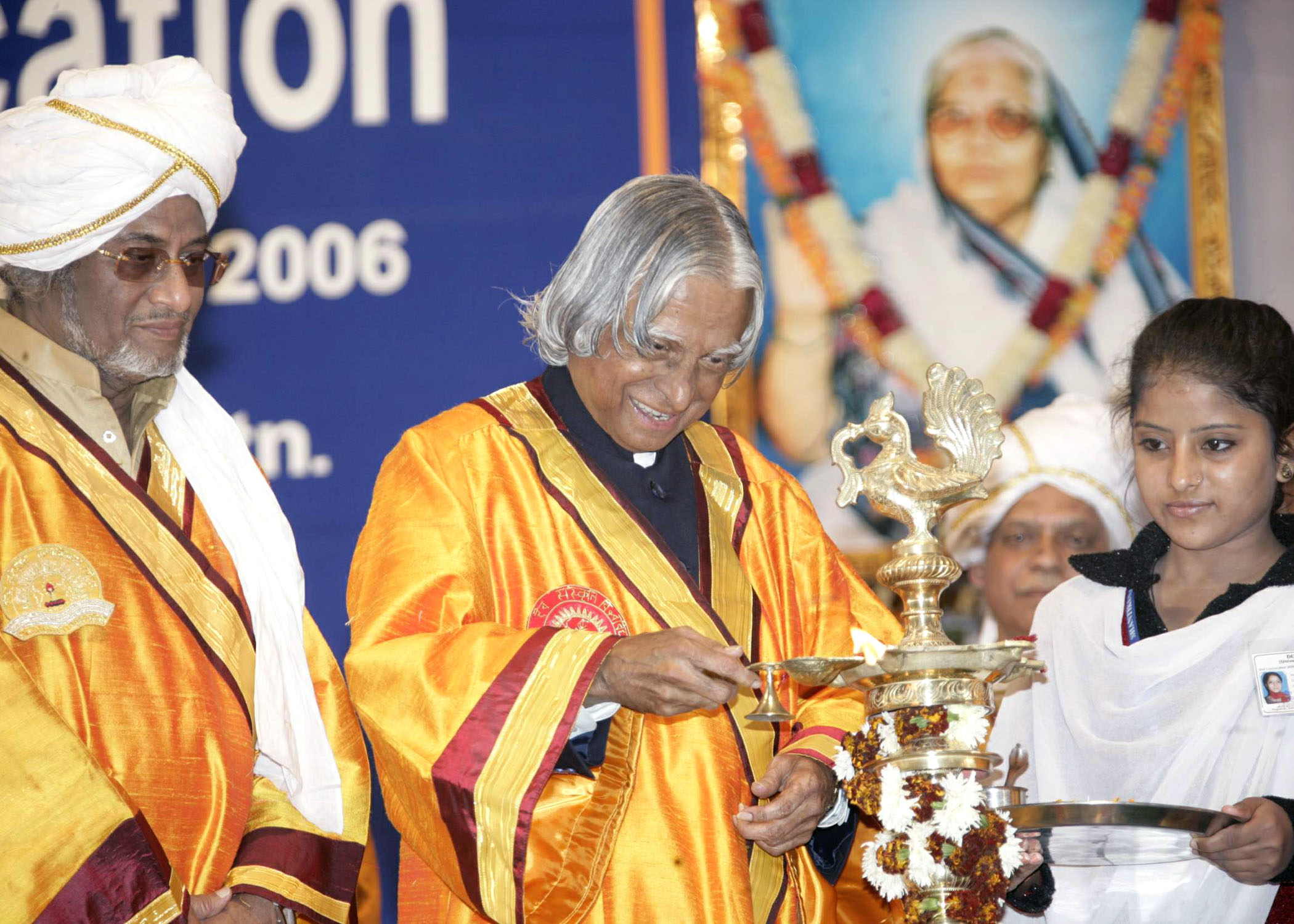
After achieving the independence for the nation, today we have the responsibility of transforming India into a developed nation before the year 2020. I am confident that the 540 million ignited youth of our country will definitely work towards this transformation by removing the poverty among 220 million people of the billion plus people and by preserving our civilizational heritage. It is the task of the educational institutions like Dev Sanskriti Vishwavidyalaya to empower the youth with value based education and equip them to spread the confidence amongst all the people that ?we can do it?.
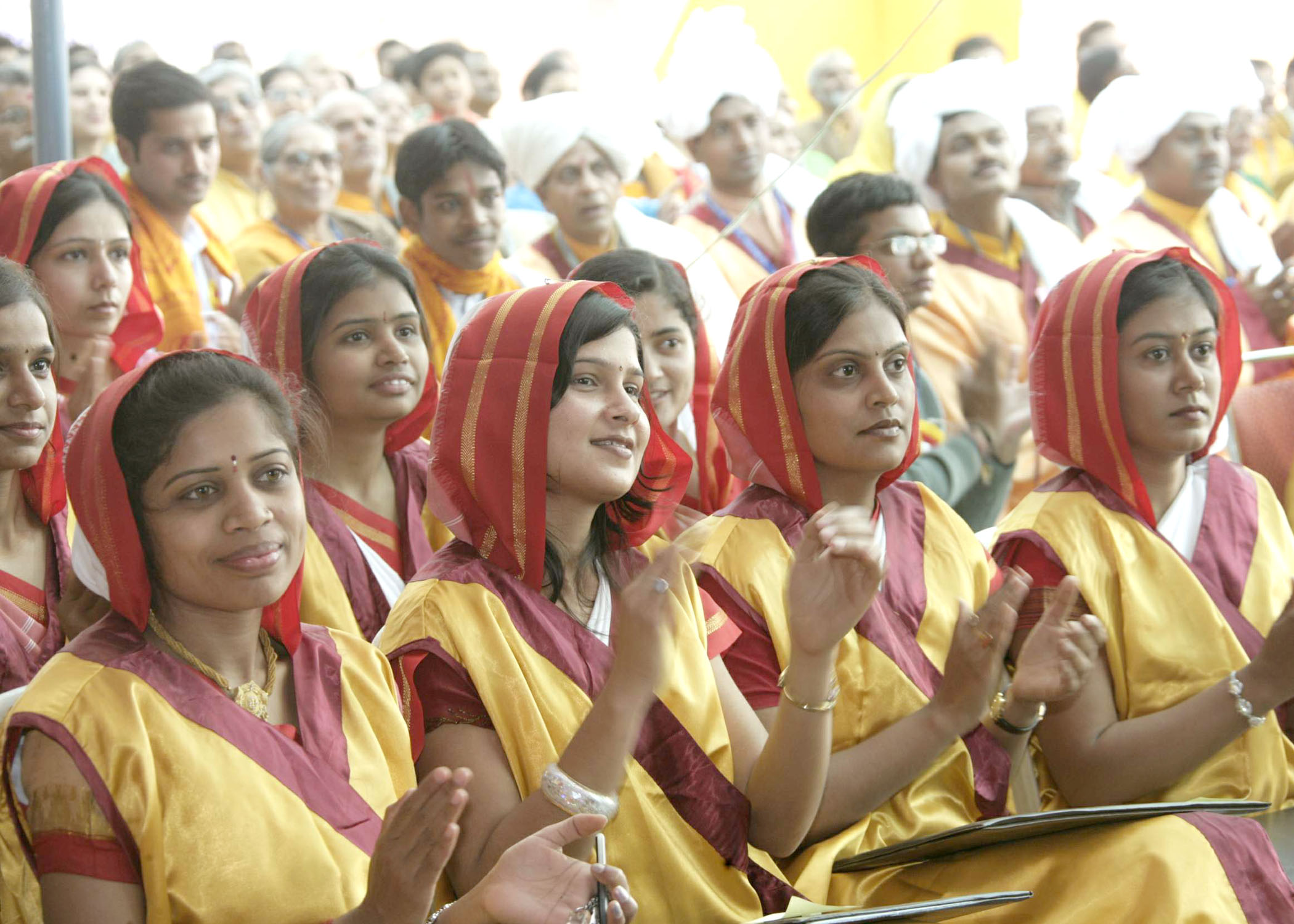

Research and Teaching
Any University is judged by the level and extent of the research work it accomplishes. This sets in a regenerative cycle of excellence. Experience of research leads to quality teaching and quality teaching imparted to the young, in turn enriches the research. Research brings transformation and development and also enhances the quality of education. Both research and teaching go together in good colleges and universities. I am happy that Dev Sanskriti Vishwavidyalaya is carrying out research in areas of human consciousness, yogic science, clinical psychology and Indian culture. I am sure, the research results from these studies will definitely provide valuable inputs for structuring the education system needed for transforming our youth into enlightened citizens.
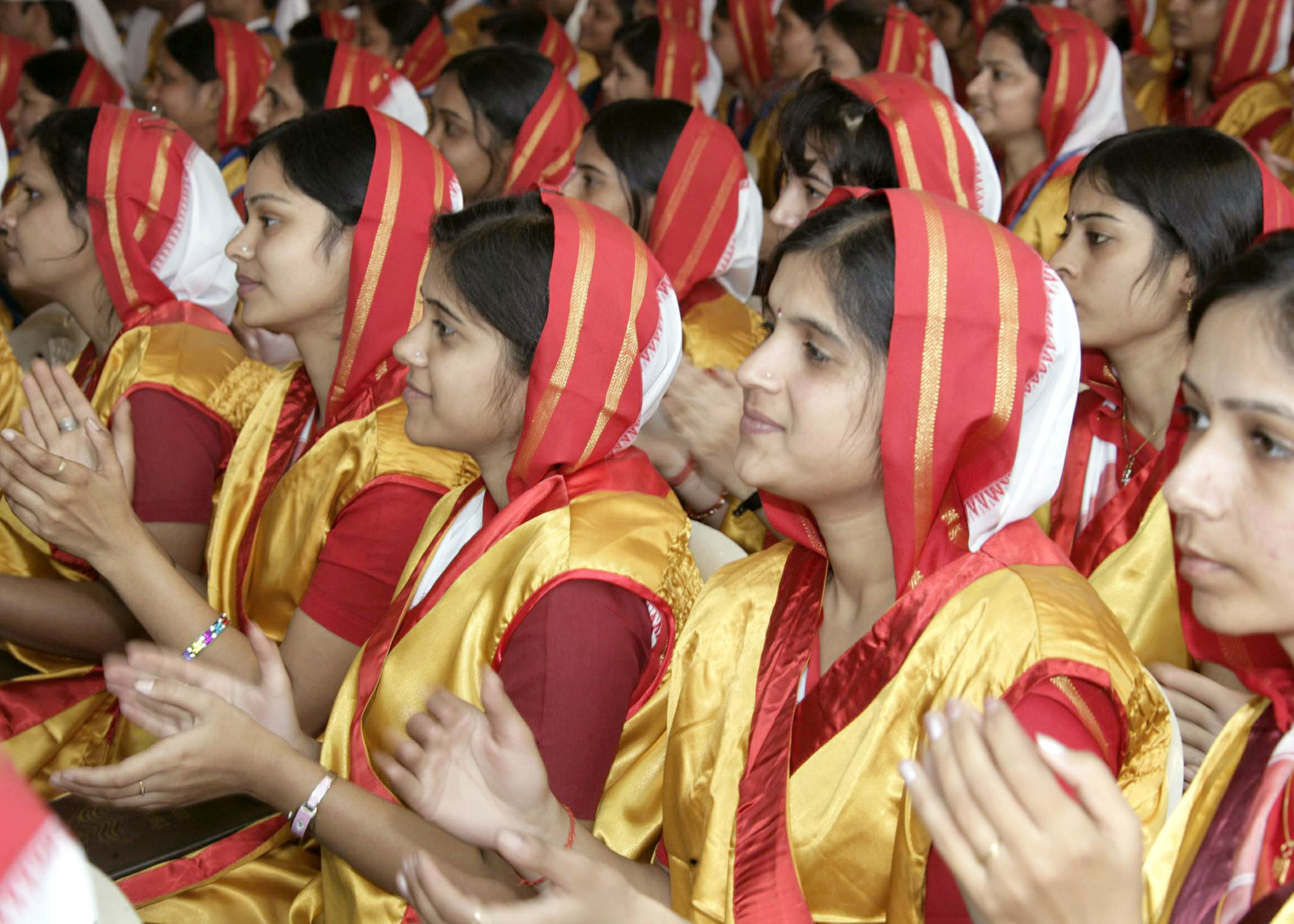

Conscience is the light of Soul
Let me share with you a thought on conscience. Conscience is the light of the Soul that burns within the chambers of our psychological heart. It is as real as life is. It raises the voice in protest whenever anything is thought of or done contrary to the righteousness. Conscience is a form of truth that has been transferred through our genetic stock in the form of the knowledge of our own acts and feelings as right or wrong. Conscience is also a great ledger where our offences are booked and registered. It is a terrible witness. It threatens, promises, rewards and punishes, keeping all under its control. If conscience stings once, it is an admonition, if twice, it a condemnation.
Now, I would like to discuss the role to be played by the University in building capacity among our students.
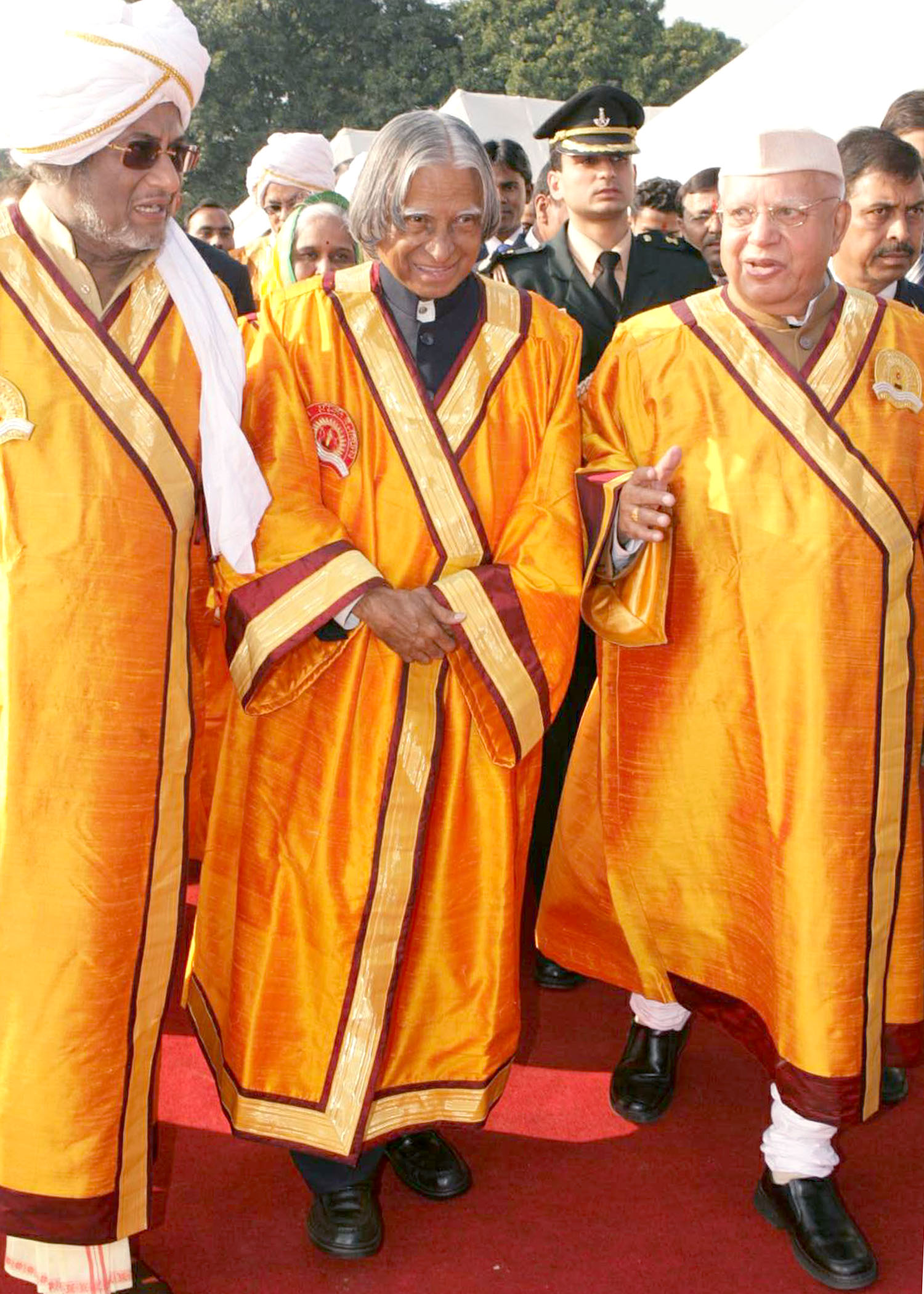

Capacity Building
A good educational model is the need of the hour to ensure that the students grow to contribute towards the economic growth of a nation. Normally, research, technology and performance in the three sectors namely agriculture, manufacturing and services lead to economic growth. Can we sow the seeds of capacity building among the students? There will be continuous innovation during the learning process. To realize this, special capacities are required to be built in education system for nurturing the students. The capacities which are required to be built are research and enquiry, creativity and innovation, use of high technology, entrepreneurial and moral leadership. I am not going to go into detail, you may look at my website, for details.
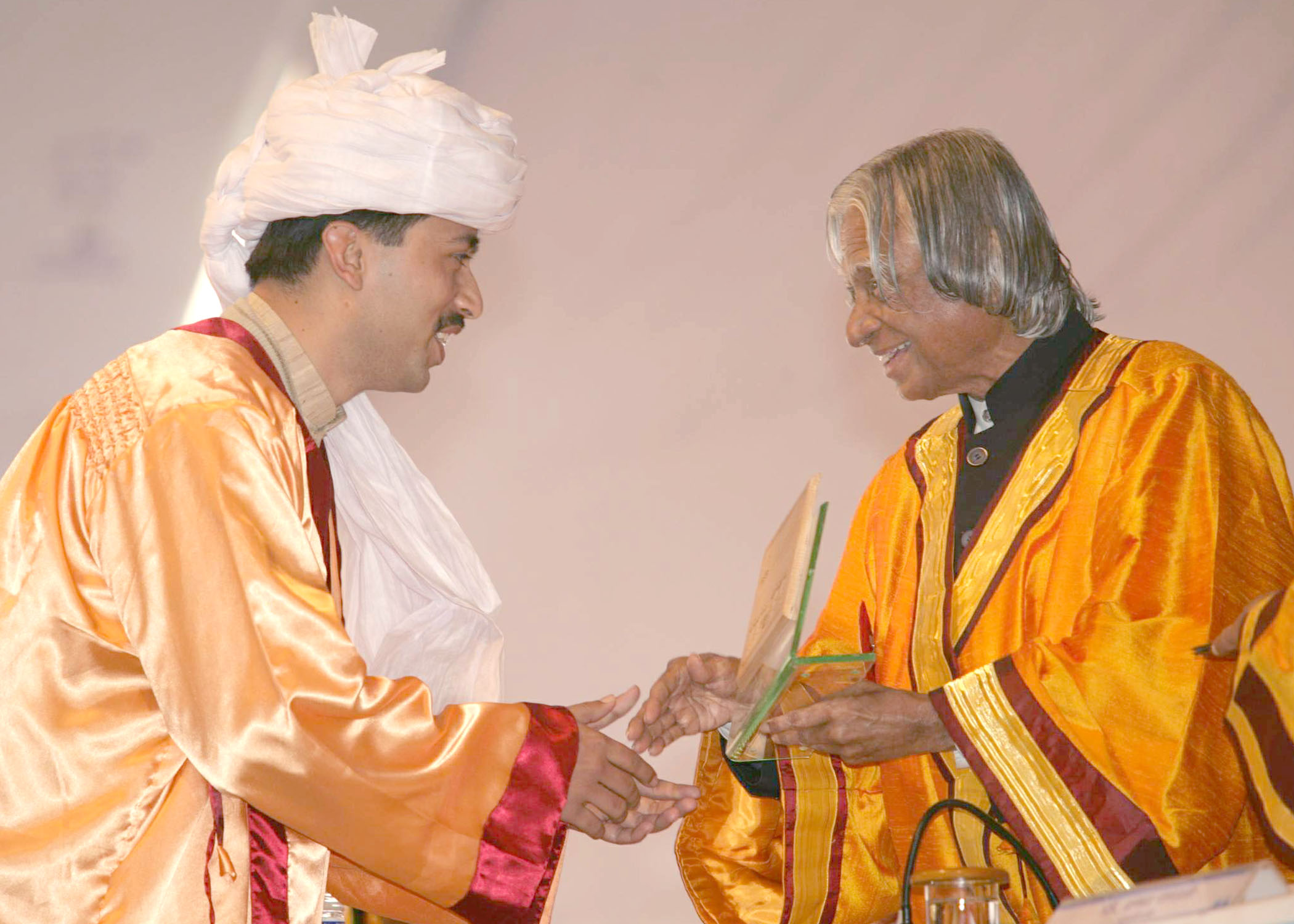
Research and enquiry: Research and enquiry: The 21st century is about the management of all the knowledge and information we have generated and the value addition we bring to it. We must give our students the skills with which they find a way through the sea of knowledge that we have created and continue with life long learning. Today, we have the ability, through technology, to really and truly teach ourselves to become the life-long learners. This is required for sustained economic development.
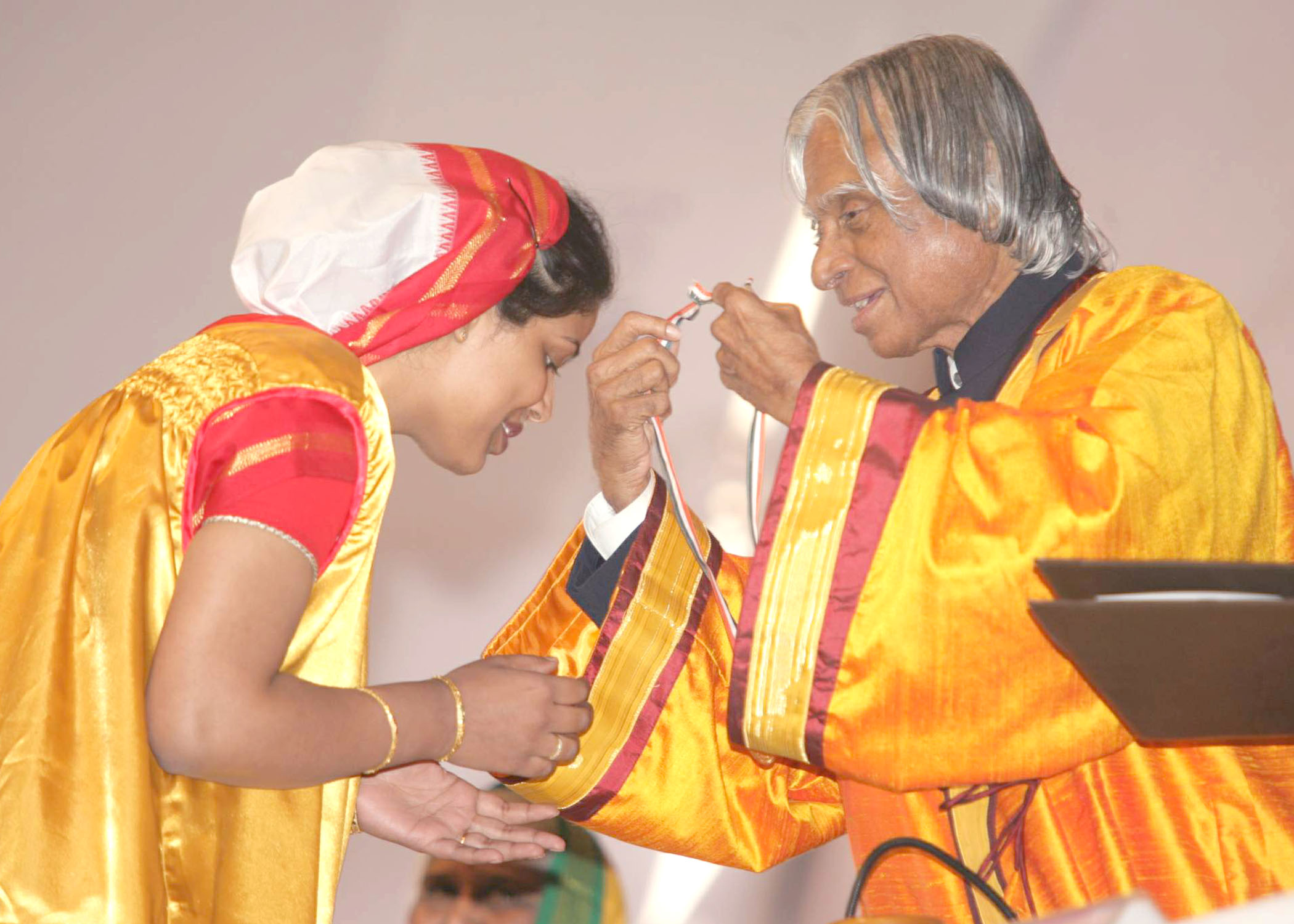
Creativity and innovation: The management of knowledge in the 21st century is beyond the capacity of a single individual. The amount of information that we have around is overwhelming. The management of knowledge therefore must move out of the realm of the individual and shift into the realm of the networked groups. The students must learn how to manage knowledge collectively. When the information is networked the power and utility of the information grows as square as stated by Metcalfe's law. Information that is static does not grow. In the new digital economy information that is circulated creates innovation and contributes to national wealth. This could promote spread of the values and culture and could help create better mutual understanding at global level. I am happy that Dev Sanskriti Vishwavidyalaya is inculcating morals adorned with the awareness about the glory of ancient Indian culture through an examination every year with the participation of about 4.2 million students from 20 States. The participation in this examination will definitely be useful for promoting creativity and innovation among our youth consistent with morality.
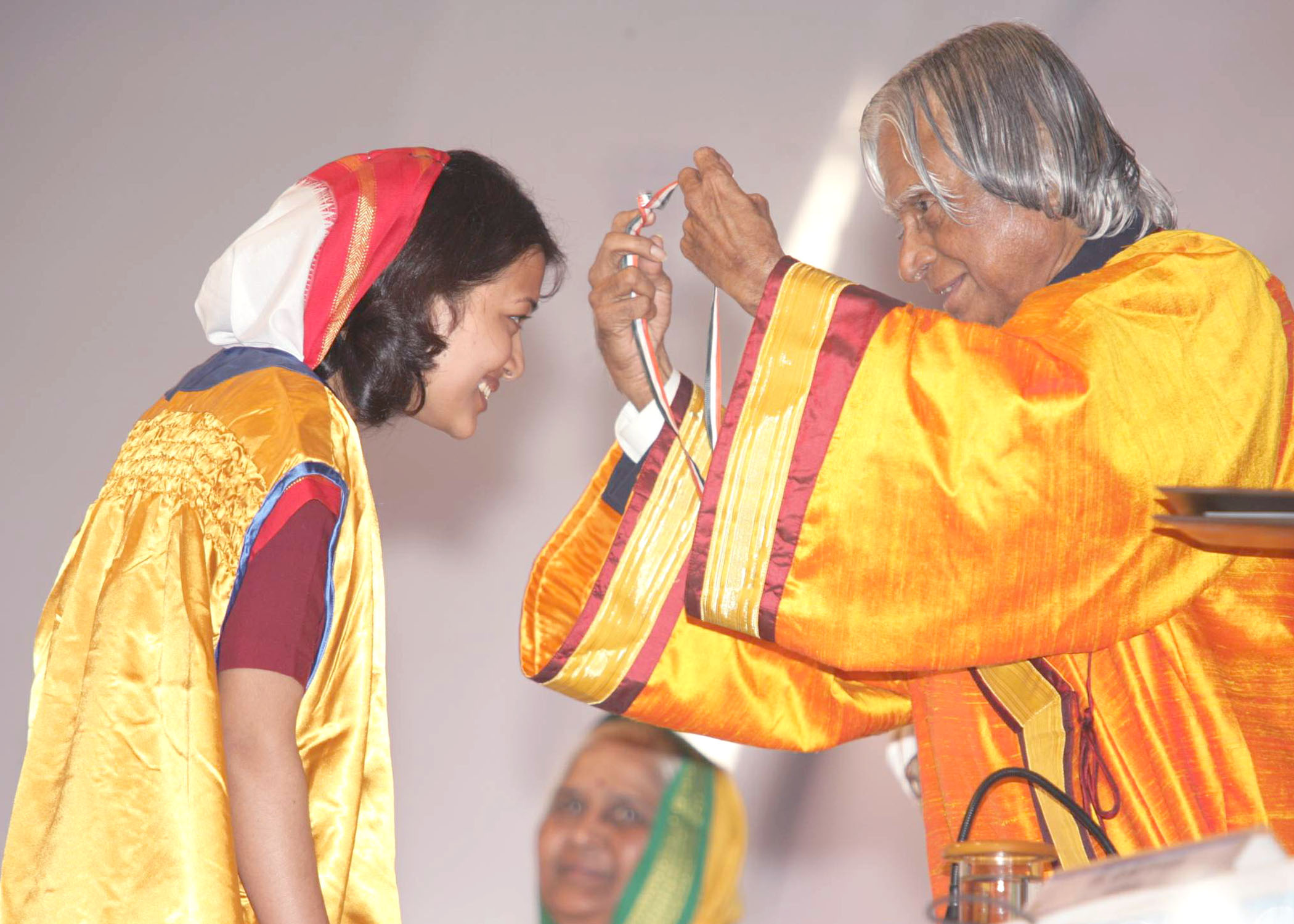
Capacity to use high technology: Every student in our colleges should learn to know how to use the latest technologies for aiding their learning process. Universities should equip themselves with adequate computing equipment, laboratory equipments, and Internet facilities and provide an environment for the students to enhance their learning ability. In the midst of all of the technological innovations and revolutions we cannot think that the role of the teachers will be diminished. In fact the teacher will become even more important and the whole world of education will become teacher assisted and would help in ?tele-porting? the best teacher to every nook and corner of the country and propagate the knowledge. Use of technology will enable promotion of distance education among our youth and advancing the intellectual, cultural and spiritual welfare of the masses through reviving the Vedic education system.

Entrepreneurship: The aptitude for entrepreneurship should be cultivated right from the beginning and in the university environment. We must teach our students to take calculated risks for the sake of larger gain, but within the ethos of good business. They should also cultivate a disposition to do things right. This capacity will enable them to take up challenging tasks later.
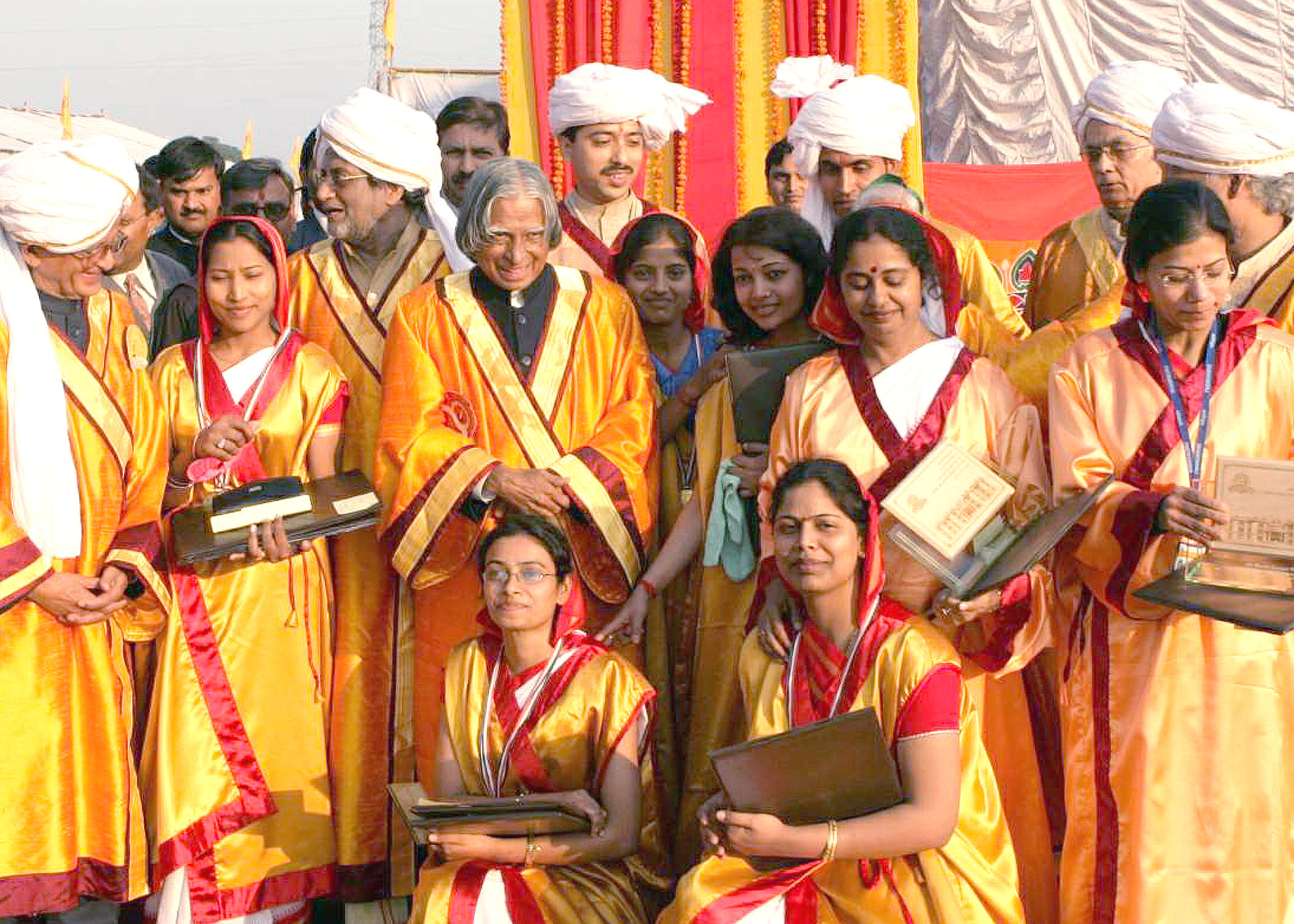
Moral leadership: Moral leadership involves two aspects. First it requires the ability to have compelling and powerful dreams or visions of human betterment. Moral leadership requires a disposition to do the right thing and influence others also to do right things. I am happy that as a part of moral education the university is having regular classes in Gita and meditation and extensive research in behavioural and oriental studies. In addition, the Viswavidyalaya also has village adoption and model village development programme for bringing about a new social order based on the vision of Guru Dev.
In sum, inquiry, creativity, technology, entrepreneurial and moral leadership are the five capacities required to be built through the education process. If we develop in all our students these five capacities, we will produce ?Autonomous Learner? a self-directed, self controlled, lifelong learner who will have the capacity to both, respect authority and at the same time is capable of questioning authority, in an appropriate manner. These are the leaders who would work together as a ?Self-organizing Network? and transform the nation into a prosperous and peaceful nation.

Kali bein experience
Here I would like to share one experience on how a challenging Environment upgradation mission of a Kali-bein Rivulet through a committed leadership from a saint in Punjab.
The status of environmental cleanliness is one of the indicators of development of a nation. As a nation, we have to keep our environment clean and tidy including all our places of worship and rivers. I am delighted to learn the Kali Bein rivulet, the place where Gurunanak Devji is said to have received enlightenment. Over the years this rivulet has turned into weed choked drain. Recently river has become clean due to the efforts of Baba Balbir Singh Seechewal in partnership with the Punjab State Government. Recently I have visited Kali bein rivulet, and witnessed the great work, he organized the devotees movement in stopping the massive flow of sewage into the Bein and cleaned 160 km long polluted and choked rivulet within the last four and a half years by deploying on an average 3000 volunteer pilgrims per day. Today one can feel the flow of fresh water in this rivulet released from the Tarkina Barrage by the government about a year ago. The revival of the rivulet has recharged the water table as the hand pumps that had become dry for the past 4 decades are now pumping out water.
While I was thinking how we should solve the problem of improving the environment of rivers and religious places, I find one of our enlightened citizens has taken the initiative and leadership and demonstrated the power of ignited individuals to solve societal problem. Let this model spread in all the places of divine worship and inspire the pilgrims to participate in the task of clean environment in water and air.
I am happy that as a part of moral education the university is having regular classes in Gita and meditation and extensive research in behavioural and oriental studies. In addition, the Viswavidyalaya also has village adoption and model village development programme for bringing about a new social order based on the vision of Guru Dev. The most important part of the education is to imbibe the confidence among the students is the spirit of ?we can do it? which will enable them to meet the challenges of our national mission of transforming the nation into a developed country by 2020. In this context, let me now talk to you about a sustainable Rural development model called PURA (Providing Urban Amenities in Rural Areas).

Rural Development Enterprise
The total number of villages in the country are over 6 lakhs with a population of over 700 million living in the rural areas. Development of these rural areas will need the creation of 7000 cluster of villages having an average population of one lakh. This could be achieved through the Provision of Urban Amenities in Rural Areas (PURA) programme for these clusters. This would involve the identification of a cluster of 20 to 30 villages with growth potential and creating physical connectivity, electronic connectivity, knowledge connectivity and thereby market connectivity. There will be four types of PURAs namely plain PURA, coastal PURA, desert PURA and Hill PURA depending upon the terrain condition. The objective of these PURAs will be:-
a) To provide dwelling units to all village citizens with clean water supply and sanitation facilities,
b) The village complex will have 100 percent literacy ,
c) Apart from upgrading existing schools, the complex will have a few colleges, world class vocational training institutions in construction, carpentry, welding, natural art; computer maintenance and services, IT Enabled Services, BPO and a Call Center. The "Sakshat" programme - a one stop education portal will be used through internet for capacity building in this region,
d) People in the PURA complex will be able to get quality healthcare through tele-medicine and also through mobile clinics via Primary Health Centres. They will be brought under a corporate medical healthcare scheme,
e) Each PURA village complex will be free from diseases like polio, TB, leprosy and malaria and other waterborne diseases. The infant mortality rate will be less than 10,
f) The PURA complex will promote horticulture and floriculture products, apart from agriculture in collaboration with agricultural universities located in different States.
g) There will be agro-processing industries in the PURA complex for value addition to horticulture produce,
h) Creation of dairy and fish farms in each PURA complex for providing additional non-farm revenue to farmers. They can also produce other dairy products,
i) Revival of all existing water bodies in the PURA cluster,
j) Provision of employment to all employable people of the village through additional jobs in dairy, agro-processing, construction, handicraft and tourism enterprises,
k) Overall the per capita income of the PURA cluster should increase by three times and people living below the poverty line should come down to zero in six years.
I am sure many of the graduates, post-graduates and doctorates passing out from Dev Sanskriti Viswavidyalaya will participate in the creation of PURA enterprises in different parts of the country. The graduates themselves can choose the specific areas based on their local knowledge and work with State Governments, societal transformers, educational institutions and other social welfare agencies and create PURA enterprises which will lead to the improvement of lifestyle of village community of the chosen region. This will definitely be an important contribution by the graduates passing out from this Viswavidyalaya.
While embarking on this mission, they can remove the ignorance, weakness and poverty which is said to be the cause of all problems by Acharyasri. Also, the students can integrate science and spirituality in promoting social welfare which was the dream of Acharyasri. While talking about science and spirituality, I would like to share an experience which I had when I was working with the Indian Space Research Organization.
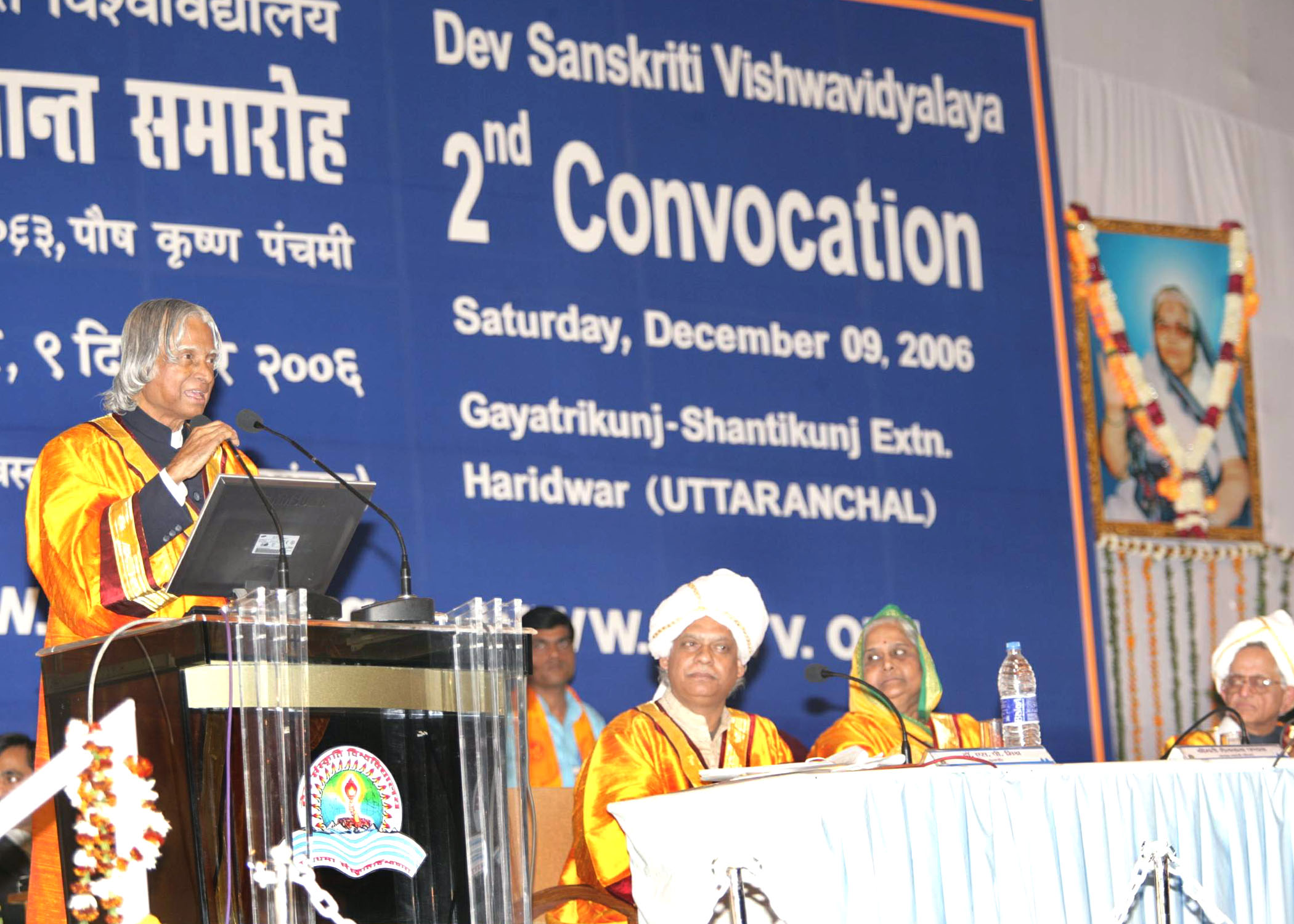

Science and Spirituality
I would like to recall an incident that happened four decades ago. Prof. Vikram Sarabhai is the visionary of the space programme in India. He is well known for his cosmic ray research area that led to evolving the space research programme for the nation. Prof. Sarabhai was looking for a site to establish a space research station in the equatorial region of India. He visited a number of places. Thumba in Kerala in Southern India was selected by the scientific community for space research, as it is near the equatorial region and is ideally suited for ionospheric research in the upper atmosphere apart from the study of the atmospheric structure. When Prof. Sarabhai visited Thumba, the locality had a series of villages and thousands of fishermen folk were living in that area. It also had a beautiful ancient church, the St. Mary Magdalene Church, Pallithura and a Bishop's House. Prof. Sarabhai met many politicians and bureaucrats to get the place for the work of space science research. It did not move further because of the nature of the place. He was asked to see the Bishop of Trivandrum, at that time in 1962, Rev. Father Dr. Peter Bernard Pereira. It was a Saturday when Prof. Sarabhai met the Bishop. The Bishop smiled and asked him to meet him the next day, that is Sunday. In the morning after Church Service, the Bishop told the congregation, "my children, I have a famous scientist with me who wants our church and the place I live, for the work of space science research. Dear children, science seeks truth by reasoning. In one way, science and spiritualism seek the same divine blessings for doing good to the people. My children, can we give God's abode for a scientific mission?" There was a chorus of 'Amen' from the congregation and the whole church reverberated. Subsequently, the big event took place in 1962. Rev. Dr. Peter Bernard Pereira, the Bishop of Trivandrum, took the noble decision to dedicate the church in recognition of India's national goal of establishing the Indian Space Research Organisation (ISRO) at Pallithura, Thumba. That was the church where we had our design centre, started rocket assembly, design of filament winding machine for FRP product and the Bishop's house was our scientists' place. Later, the Thumba Equatorial Rocket Launching Station (TERLS) led to the establishment of the Vikram Sarabhai Space Centre (VSSC) and multiple space centres throughout the country.
When I think of this event, I can see how enlightened spiritual and scientific leaders, all converge towards giving reverence to human life. A new church and new schools were established in record time. Of course the birth of TERLS and then VSSC gave India the capability to design, develop and produce world class huge rocket systems and subsequently, India developed the capability of launching geo-synchronous, sun-synchronous and meteorology spacecraft, communication satellites and remote sensing satellites, thereby providing fast communication, weather forecasting and also locating water resources for the country.
Today, among us, Prof. Vikram Sarabhai is no longer there, Rev. Dr. Peter Bernard Pereira is also no longer there, but those who are responsible for the creation and making of the flower blossom will themselves be a different kind of flower as described in the Bhagwat Gita: "See the flower, how generously it distributes perfume and honey. It gives to all, gives freely of its love. When its work is done, it falls away quietly. Try to be like the flower, unassuming despite all its qualities". What a beautiful message for all generations, on integration of minds and a universal mind. No where in the world has a church been given for scientific research, it has happened only in India. It is a great message to be spread. The message is, the best component of religion can be transformed into a spiritual force that will shape society.
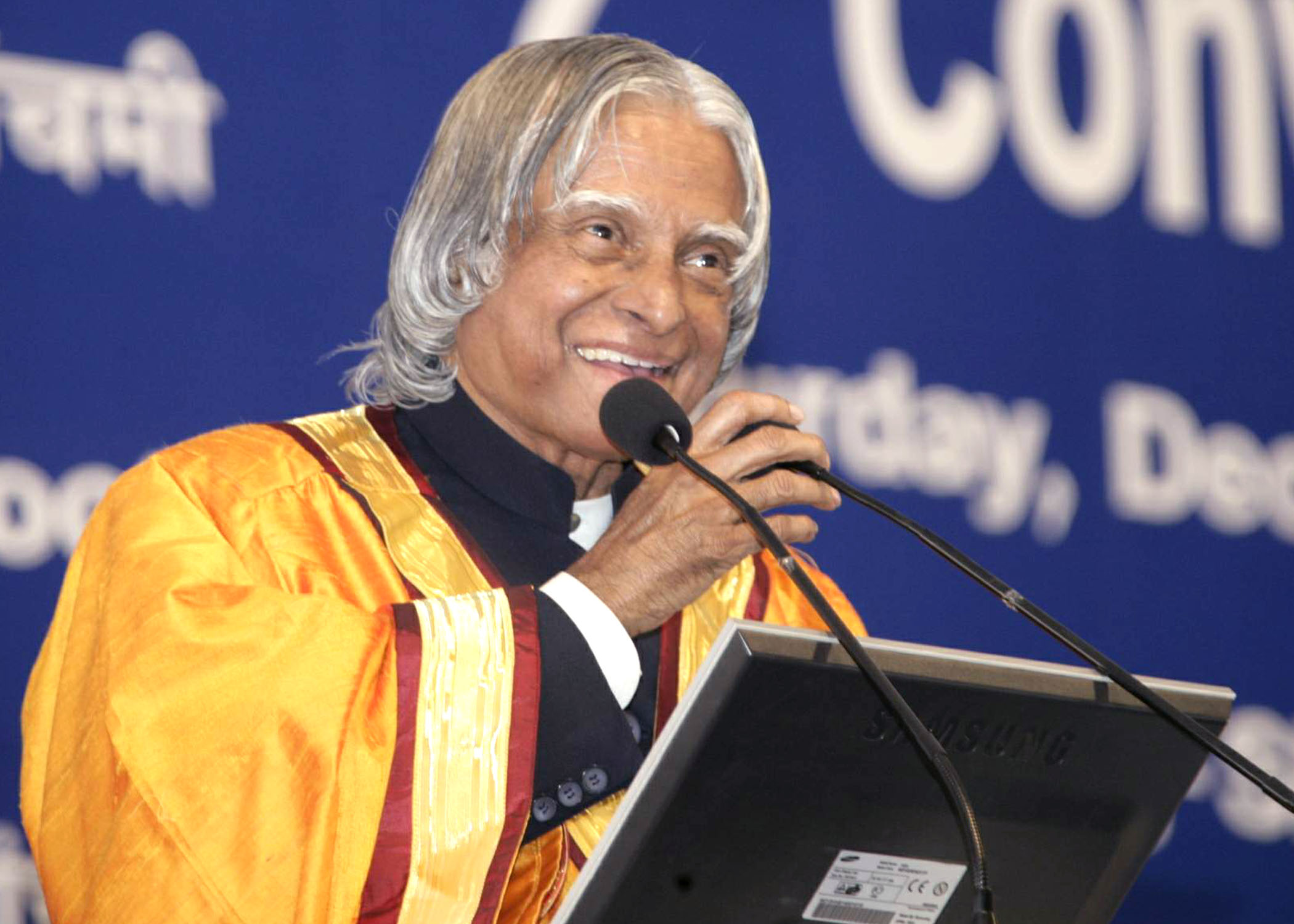

Conclusion
Ultimately education in its real sense is the pursuit of truth. It is an endless journey through knowledge and enlightenment. Such a journey opens up new vistas of development of humanism where there is no scope nor room for pettiness, disharmony, jealousy, hatred or enmity. It transforms a human being into a wholesome whole, a noble soul and an asset to the universe. Universal brotherhood in its true sense becomes the sheet anchor for such education. Real education enhances the dignity of a human being and increases his self-respect. If only the real sense of education could be realized by each individual, and carried forward in every field of human activity the world will be so much a better place to live in.
Once again let me congratulate all the graduating students of Dev Sanskriti Vishwavidyalaya and my best wishes to all members of this Viswavidyalaya success in their mission of evolution of enlightened citizens.
May God bless you.

Question and Answer Session
1. Can all the children of India be given free and quality education?
- Abhinave, 5th class, Gayatri Vidyapeeth
Ans: I have given assent to the Right to Education Act which provides free and compulsory education to all the children between the age group 5 to 14. State Governments are in the process of implementing. Also, the Ministry of Human Resource Development has launched a e-learning programme called SHAKSAT: One Stop Education Portal. The e-learning programme provides quality education at free of cost.
2. You always say that young students of India become a scientist not a Doctor, Engineer, IAS Officer. Sir, I mean what is the reason?
- Aryan, 6th class
Ans: What I meant was bright youth must take up pure science as a career and contribute for basic research in the country. I am telling this because in general youth are preferring only to join as doctors, engineers or becoming as IAS officers many times due to parental influence. Country needs large number of basic scientist who can take up pure science as life time mission.

Seven Point Oath
1. I realize, I have to set a goal in my life. To achieve the goal, I will acquire the knowledge, I will work hard, and when the problem occurs, I have to defeat the problem and succeed.
2. As a youth of my nation, I will work and work with courage to achieve success in all my tasks and enjoy the success of others.
3. I shall always keep myself, my home, my surroundings, neighbourhood and environment clean and tidy.
4. I realize righteousness in the heart leads to beauty in the character, beauty in the character brings harmony in the home, harmony in the home leads to order in the nation and order in the nation leads to peace in the world.
5. I will lead an honest life free from all corruption and will set an example for others to adopt a righteous way of life.
6. I will light the lamp of knowledge in the nation and ensure that it remains lit for ever.
7. I realize, whatever work I do if I do the best, I am contributing towards realizing the vision of developed India before 2020.
<<Back
|
|